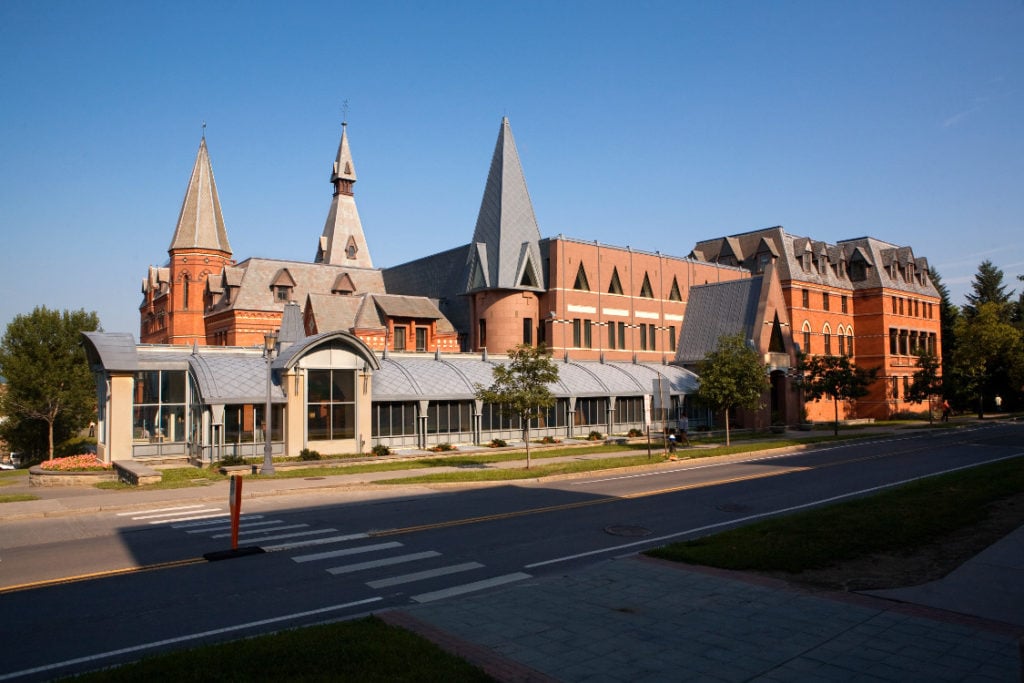
Getting your MBA at Cornell Johnson will allow you to experience Ithaca’s liberal New York state, college-town vibe to the fullest. With a smaller class size of fewer than 300 students, the program places a strong emphasis on community and teamwork. But if you’re more inclined towards the city-life, Johnson also provides the option to take classes at their tech-focused Manhattan campus.
Johnson’s host university, Cornell, has a fantastic reputation as part of the Ivy League. Cornell has excellent relationships with prestigious employers such as top consulting, investment banking, and tech firms, where a large number of alumni are present. The strong networking opportunities are definitely something to consider when deciding if Johnson is a good fit for you.
If you’re looking for an MBA program where you can choose to specialize heavily, Johnson is a good bet! Unlike some programs with a longer, fixed curriculum, at Johnson you can dive into classes that are specific to your interests early on. By the second semester of the program, you can choose to participate in Johnson’s immersion program that covers eight functional business areas. The immersion program takes experiential learning seriously, and you will find yourself rolling up your sleeves, and getting straight into site visits and live cases.
| Class Size | 282 |
| Acceptance Rate | Does not disclose |
| GMAT Median | 710 |
| GPA Median | 3.4 |
| Average Age | 28 |
| Avg. Years Work Experience | 5.3 |
| Diversity Women | 41% |
| Diversity Intl. | 35% |
| Pre-MBA Industries | Does not disclose |
| Undergraduate Majors | Does not disclose |
The data above is from 2024 and represents the Cornell Johnson Two-Year MBA Class of 2026.
See the full report: Cornell Johnson MBA Class Profile
| Salary Average | $201,634.00 |
| Offers Upon Graduation | Does not disclose |
| Offers At 3 Mos. | 94% |
| Post-MBA Industries | Consulting: 42% Financial services: 35% Technology & Telecommunications: 11% Consumer packaged goods: 4% Healthcare/Medical Services/Pharmaceuticals: 3% Energy/Utilities: 2% Manufacturing: 2% Other: 1% |
| Post-MBA Locations | United States: 100% Mid-Atlantic: 7% Midwest: 9% Northeast: 55% South: 7% Southwest: 7% West: 16% |
| Post-MBA Companies | |
| Career Development Resources |
The data above is from 2023 and represents the career statistics of the Cornell Johnson Two-Year MBA Class of 2023.
See the full report: Cornell Johnson MBA Employment Report
Cornell Johnson’s MBA curriculum spans across four semesters over two years. In the first year of the program, students primarily take core courses and participate in a mandatory team case competition. The second year of the program focuses on building leadership skills, while allowing students to take electives in areas that interest them. During the first year, students take nine required courses as part of the core curriculum. These classes cover topics such as Critical and Strategic Thinking, Data Modeling and Analytics, and Managerial Finance. You will begin taking elective courses during the second semester of your MBA. These courses fall within a diverse range of subjects, including Emerging Markets, Leadership and Ethics, and Sustainable Global Enterprise.
See the full offering of courses: Cornell Johnson MBA Course Catalog
Academic majors are not a requirement at Cornell Johnson; however, students may optionally decide to structure their course selection around one or more areas of focus. Johnson offers 12 areas of focus to choose from.
As part of Johnson’s experiential learning program, students must complete one of eight immersion courses. These offerings are spread out over a wide variety of subject areas such as Digital Technology and Strategic Operations.
Students can make use of Cornell Johnson’s four research centers and institutes to support their MBA education: The Parker Center for Investment Research, the Center for Sustainable Global Enterprise, the Emerging Markets Institute, and the Smith Family Business Initiative.
In addition to the international study trips and exchange programs, Johnson offers a variety of classes on international business. A number of these courses are affiliated with Johnson’s Center for Sustainable Global Enterprise and the Emerging Markets Institute.
The latest application requirements set by the Cornell Johnson admissions office are described below.
Here are the prompts for Cornell Johnson’s most recent application:
To the best of your understanding today, please share your short and long term goals and complete the following sentences and answering the short answer question below.
Read more: Cornell Johnson MBA Essays: Tips and Prompts
Interviews for admission to Cornell Johnson are conducted primarily through Skype or in-person at the Ithaca campus. Occasionally, you may have the option to complete the interview in your city. Candidates are encouraged to schedule their interviews within 7 days of notification. The admissions interviews are conducted either by trained second year MBA students, who are part of the Johnson Admissions Group, or by professional MBA and Admissions staff. Johnson does not offer interviews conducted by program alumni.
It is good to note that Cornell Johnson hosts Group MBA interview days. These interviews are also by invitation-only, and they include the Johnson Leadership Exploration and Assessment Day and Johnson Women in Business events.
*All data retrieved from the Cornell Johnson MBA Program webpages, unless otherwise stated.
Discover the ins and outs of the Johnson MBA program and chart your path to success with guidance from our experienced MBA admissions consultants.